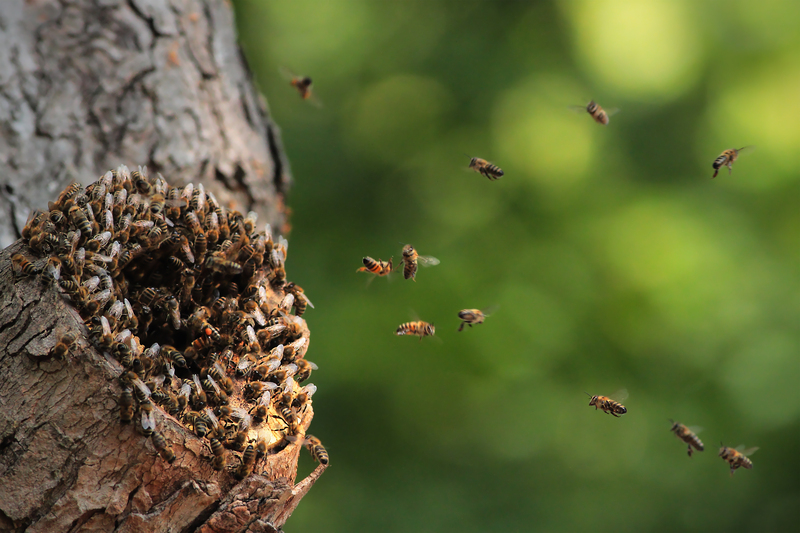Kickstart Your Neglected Garden's Transformation
Posted on 20/08/2025
Kickstart Your Neglected Garden's Transformation: The Ultimate Guide
Has your once-thriving garden been overtaken by weeds, lackluster soil, and unruly shrubs? Don't despair! Transforming a neglected garden into a vibrant outdoor oasis is more than achievable with the right approach. This comprehensive guide provides everything you need to kickstart your neglected garden's transformation, from assessing your garden's needs to creating a lasting maintenance plan.

Why Should You Reclaim Your Neglected Garden?
- Increased Property Value: A well-maintained garden boosts curb appeal and can significantly increase your home's value.
- Personal Wellbeing: Studies show that spending time in green spaces can reduce stress and improve mental health.
- Environmental Benefits: Healthy gardens support local biodiversity and help mitigate climate change impacts.
Reviving a neglected garden may seem daunting, but with the right steps and a sense of adventure, you can enjoy a brand-new outdoor sanctuary sooner than you think!
Step 1: Assessment and Planning
Survey Your Space
Before you grab your gardening gloves, take a step back and thoroughly assess your garden. Walk around the space, noting:
- Which plants are alive and salvageable?
- Where are the worst weed infestations?
- Are there any diseased trees or shrubs?
- How is the soil quality?
- Are garden structures (fences, sheds, paths) intact?
Create a Vision
Next, envision what you want from your revived garden space. Consider:
- Function: Do you want a vegetable patch, flower beds, relaxation space, or play area?
- Style: Cottage garden, modern minimalist, wildlife haven, or low-maintenance design?
- Budget & Time: How much are you willing to invest?
Step 2: Clearing and Cleaning
One of the biggest hurdles in kickstarting a neglected garden's transformation is clearing away the old before bringing in the new.
Gather Your Tools
- Gloves and protective gear
- Rake, pruners, shears
- Spade and shovel
- Wheelbarrow
- Compost bags (for organic waste)
Systematic Clearing
- Remove Debris: Collect fallen branches, old pots, broken furniture, or rubbish.
- Weed Assault: Tackle weeds at the root. Dig up perennial weeds to prevent regrowth.
- Prune and Trim: Cut back overgrown shrubs and tidy up dead branches.
- Dispose Responsibly: Compost organic material, recycle or dispose waste as appropriate.
Tip: Work in sections to avoid feeling overwhelmed, and take before-and-after photos for motivation!
Step 3: Soil Revival
The heart and soul of your garden is beneath your feet. Without healthy soil, even the heartiest plants struggle. Reviving neglected soil is crucial for your garden transformation journey.
Testing and Improving Soil
- Test pH and Nutrient Levels: Use a basic soil test kit for a quick analysis.
- Aeration: Break up compacted soil with a garden fork to improve drainage and root penetration.
- Add Organic Matter: Spread well-rotted compost or manure to replenish nutrients.
- Mulch: Apply a layer of mulch to lock in moisture and suppress future weed growth.
Remember: It might take a season for poor soil to recover fully, but the results will pay off exponentially.
Step 4: Designing Your Revitalized Garden
Layout Planning
- Mark Out Zones: Use string or garden hose to visualize beds, paths, and feature areas.
- Consider Sunlight: Note which parts get the most sun and shade for smart planting.
- Incorporate Focal Points: Think about adding a bench, water feature, or sculpture for interest.
Plant Selection
- Choose Reliable Stars: Select robust, low-maintenance plants like lavender, hydrangeas, and ornamental grasses.
- Go for Seasonal Interest: Mix evergreens, bulbs, annuals, and perennials for year-round beauty.
- Encourage Pollinators: Incorporate nectar-rich plants for bees and butterflies.
- Edibles for Your Table: Start a small herb or vegetable patch for fresh kitchen ingredients.
Check plant labels or consult local gardeners for varieties best suited to your region and soil.
Lawn Recovery
If grass has been overtaken by moss or weeds:
- Scarify: Rake out moss and dead grass thoroughly.
- Reseed or Patch: Overseed bare areas with quality grass seed.
- Water and Feed: Keep new sowings moist and add fertilizer for lush regrowth.
Hardscape and Structures
Repair broken fences or gates, paint sheds, and refresh pathways. Even a simple gravel or stepping-stone path makes an instant improvement.
Step 5: Planting and Reviving
Plant with Purpose
- Plan Before You Dig: Arrange plants while still in pots for ideal spacing.
- Groupings: Plant in odd-numbered clusters for a natural look.
- Watering In: Give new plants a thorough soaking after planting.
Don't forget to add compost or organic fertilizer to each planting hole for an extra boost!
Revamping Old Favorites
If some established plants can be saved, prune them harshly to promote strong new growth. Divide overgrown perennials or shrubs and replant the healthiest divisions.
Step 6: Wildlife-friendly Features
Transforming a neglected garden is also an opportunity to support local birds, bees, and insects:
- Install a Bird Bath or Feeder: Simple features attract thriving avian life.
- Build a Bug Hotel: Stack old logs or bamboo for beneficial bugs to nest in.
- Create a Wild Corner: Leave a patch to grow wild for butterflies and hedgehogs.
- Pond or Water Feature: Even a shallow dish invites frogs and dragonflies.
Step 7: Finishing Touches
Add Lighting
Solar-powered stake lights highlight new beds, while string lights provide magical evening ambience.
Outdoor Furniture Refresh
- Spruce up old furniture with paint or wood oil.
- Add bright cushions or a weatherproof rug for comfort and color.
Personal Touches
Colorful pots, hanging baskets, and homemade decorations will help your neglected garden's transformation kickstart feel uniquely yours!
Step 8: Maintenance for Long-term Success
Consistent care will keep your garden looking wonderful for years:
- Weed Regularly: Little and often is easier than letting weeds take over.
- Water Wisely: Early morning or evening watering reduces evaporation.
- Feed and Mulch: Top up nutrients and mulch annually for lush growth.
- Inspect Plants: Monitor for pests or diseases and treat early.
Pro Tip: Set calendar reminders for seasonal tasks like pruning, feeding, and sowing seeds.
Common Mistakes to Avoid When Reclaiming a Neglected Garden
- Trying to do everything at once: Break down projects into manageable stages.
- Ignoring soil health: Healthy soil is the secret for thriving plants.
- Overplanting or crowding beds: Leave adequate spacing for mature growth.
- Neglecting long-term maintenance: Create easy routines to keep on track.
- Removing all wildlife habitat: Leave some natural pockets for local species.
Case Study: A Real-Life Garden Transformation
Sarah inherited her grandmother's overgrown plot, filled with brambles and crumbling paths. Over three weekends, she and her family:
- Cleared debris and weeds
- Pruned back wild shrubs
- Added compost to the soil
- Created new flower beds with tough native perennials
- Installed a recycled bench and solar lights
After a few months of steady improvement, Sarah's garden is now a lush haven enjoyed by family, friends, and wildlife alike.

Frequently Asked Questions on Kickstarting Garden Transformation
How quickly can I transform a neglected garden?
Depending on the size and scale, most transformations can start showing results within a few weekends of dedicated work. Larger or very neglected spaces may take a full growing season or more, but even small improvements make a big difference.
What's the fastest way to improve a neglected garden on a budget?
Focus on clearing, basic lawn repair, and mulching. Use cuttings and divisions from friends, and browse local swaps for free plants. Upcycle existing furniture or containers for instant refreshes.
Which low-maintenance plants are best for reviving a garden?
Lavender, sedum, daylilies, ornamental grasses, and hardy evergreen shrubs like box or holly are all excellent, low-care choices that can transform your recovered garden quickly.
Conclusion: Your New Garden Awaits
Kickstarting your neglected garden's transformation is empowering and deeply rewarding. By tackling the process step by step--from assessment to maintenance--you'll not only reclaim a beautiful outdoor space but also foster biodiversity and wellbeing for yourself, your family, and local wildlife.
Ready to dig in? Grab your tools and let your garden's revival story begin!
Transform your neglected garden today and watch your outdoor dreams come to life!

